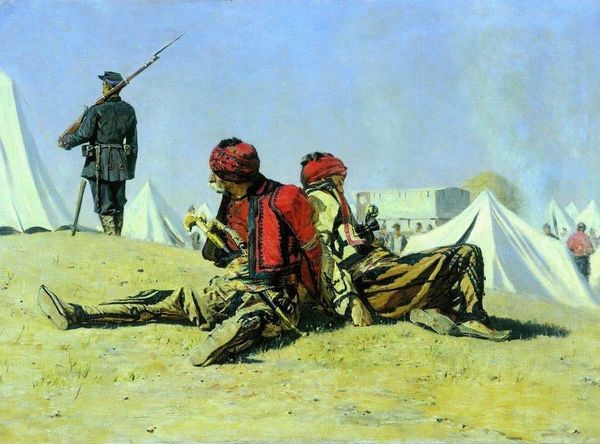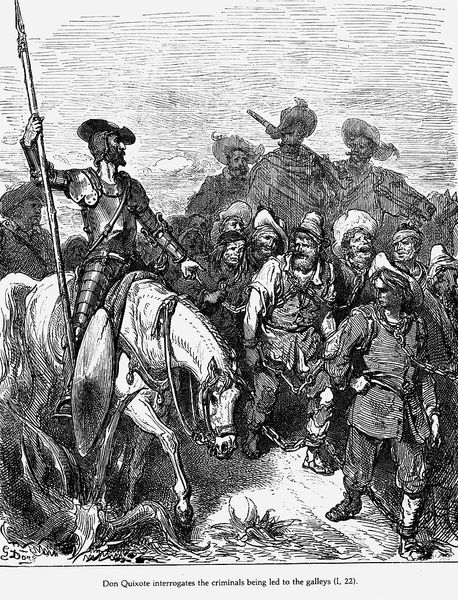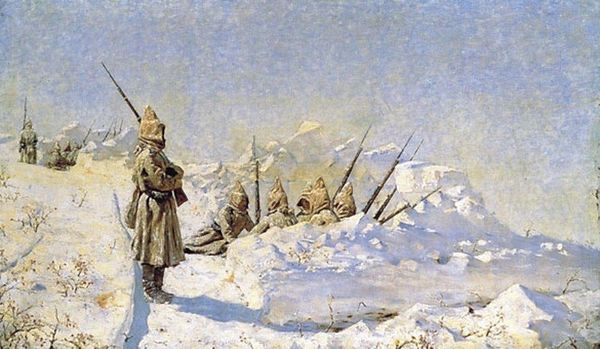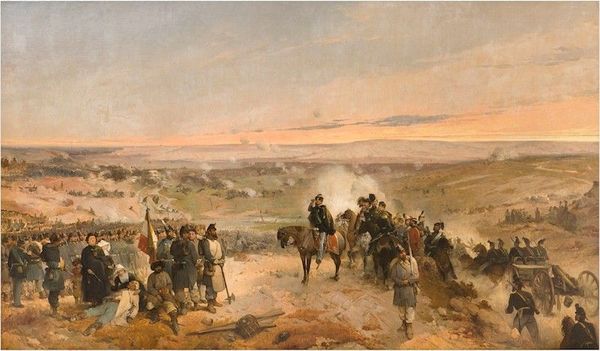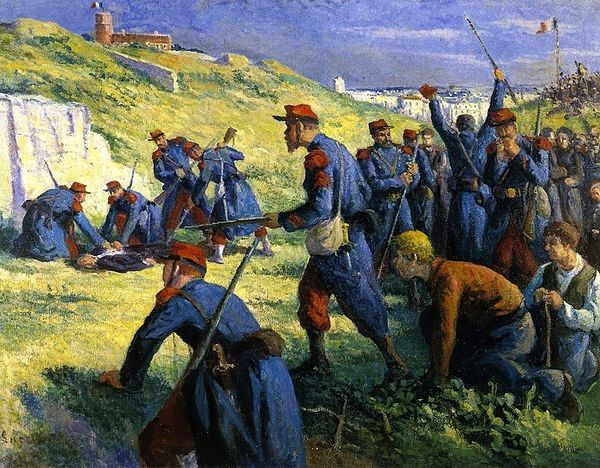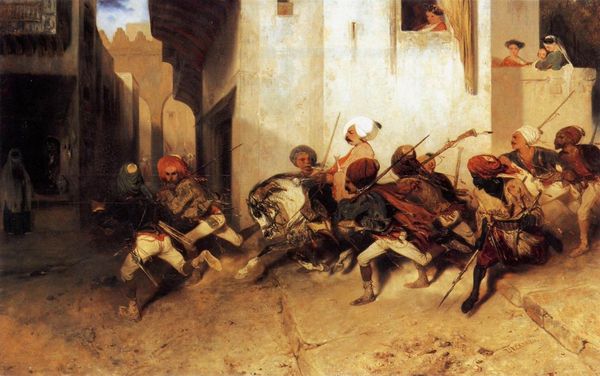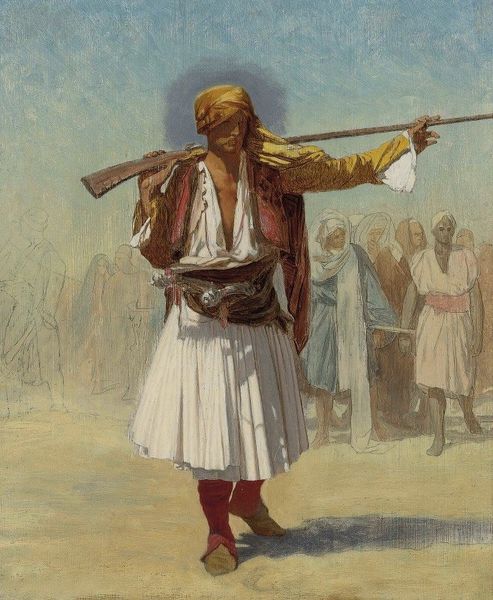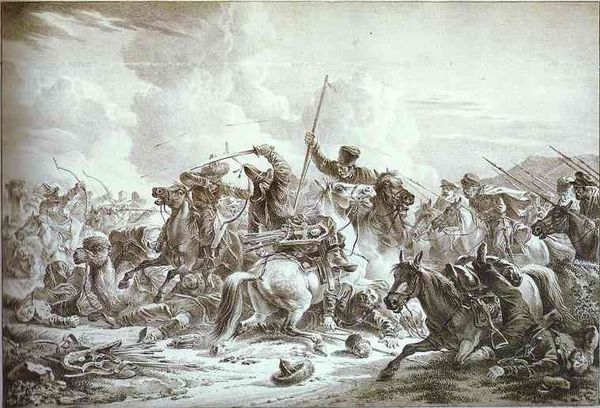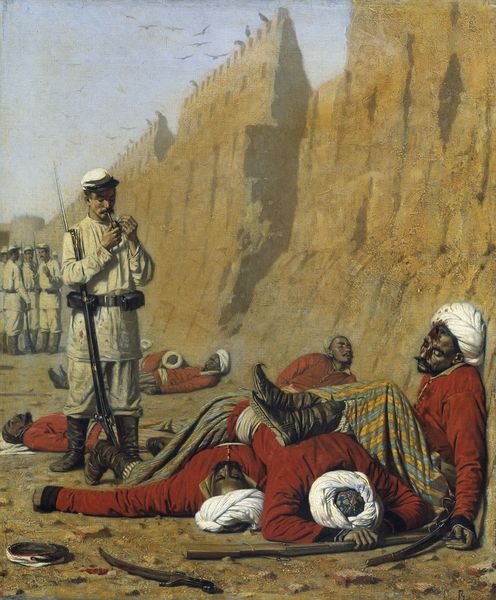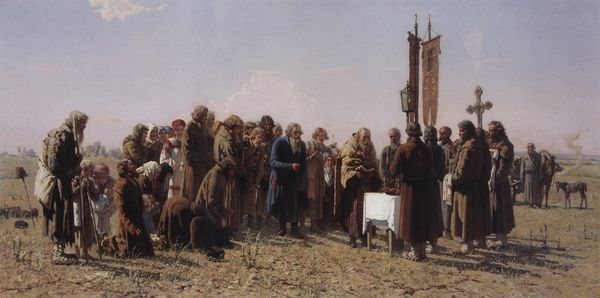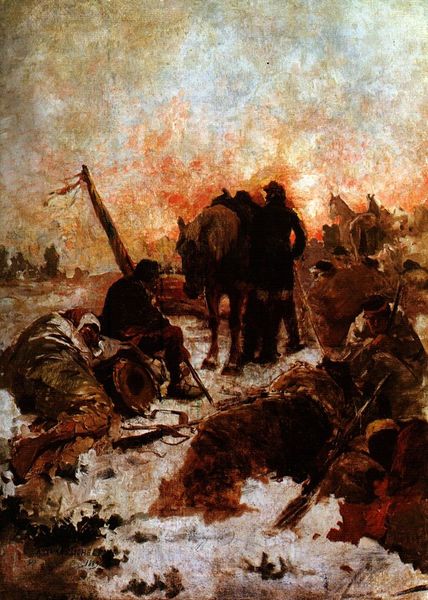
Copyright: Public domain
Curator: What strikes me immediately about this piece is the stark emptiness. It's almost haunting. A desolate landscape, and then, these figures… it just breathes loss, somehow. Editor: You're picking up on Vereshchagin's intention, I think. This is "Winners," painted in 1879. Painted in oils, it depicts a desolate battlefield. It's an unflinching portrayal of war's aftermath. Curator: "Winners," eh? Bit ironic, innit? It feels less like a victory and more like… like a punch to the gut. The colors are muted, almost like the life has been sucked out of everything. Is this a scene from a particular conflict? Editor: It doesn’t depict one single conflict. The scene is not meant to glorify a particular event but to symbolize the broader consequences of warfare. The figures in the foreground seem to be from different backgrounds, yet they are unified through their shared plight and circumstances, raising poignant questions regarding the nature of power, identity, and nationalism. Curator: Ah, okay, the bigger picture of war... It's the piles of bodies, those splayed limbs and vacant stares – that stays with you, doesn't it? A bit theatrical, wouldn’t you say? Like it has some hints of romanticism despite aiming to show what war *actually* looks like? Editor: The piece undeniably integrates components from Realism and Romanticism in that it provides viewers a comprehensive examination of the aesthetic characteristics of war. This dual methodology may promote conversations about the diverse functions and ramifications of conflicts across various periods. Curator: The landscape… the horizon feels miles away. It kind of adds to the sense of… infinite sadness, almost. And it all appears as one gray smear. What sort of audience do you reckon Vereshchagin had in mind when he made this? Editor: Vereshchagin hoped to confront viewers with the true costs of war. His work, situated within both the Russian Avant-Garde and Academic Art, served as social critique but also fit into broader historical narratives and philosophical discussions of the era. Curator: Knowing the backstory, it's hard *not* to see all that sadness. I do think I love its sort of “rawness”. There’s nothing elegant about the composition; its power lies in its starkness. What do you make of this… ambiguous romantic-realist cocktail? Editor: The artistic blend is strategic: while acknowledging Romanticism's dramatic components, the incorporation of Realistic attributes compels viewers to confront the realities of human conflicts and enables a better knowledge of the intricate relationships amongst aesthetic forms and conceptual complexity in depictions of wartime situations. Curator: It's interesting how one artwork can house such a range of perspectives and provoke such profound dialogues on culture, art, history. I can’t shake the feeling it's trying to tell us. Thanks for helping to unlock some of it. Editor: Likewise, this examination serves as a stark reflection, inviting us to contemplate the larger human implications ingrained in this work by Vereshchagin.
Comments
No comments
Be the first to comment and join the conversation on the ultimate creative platform.
